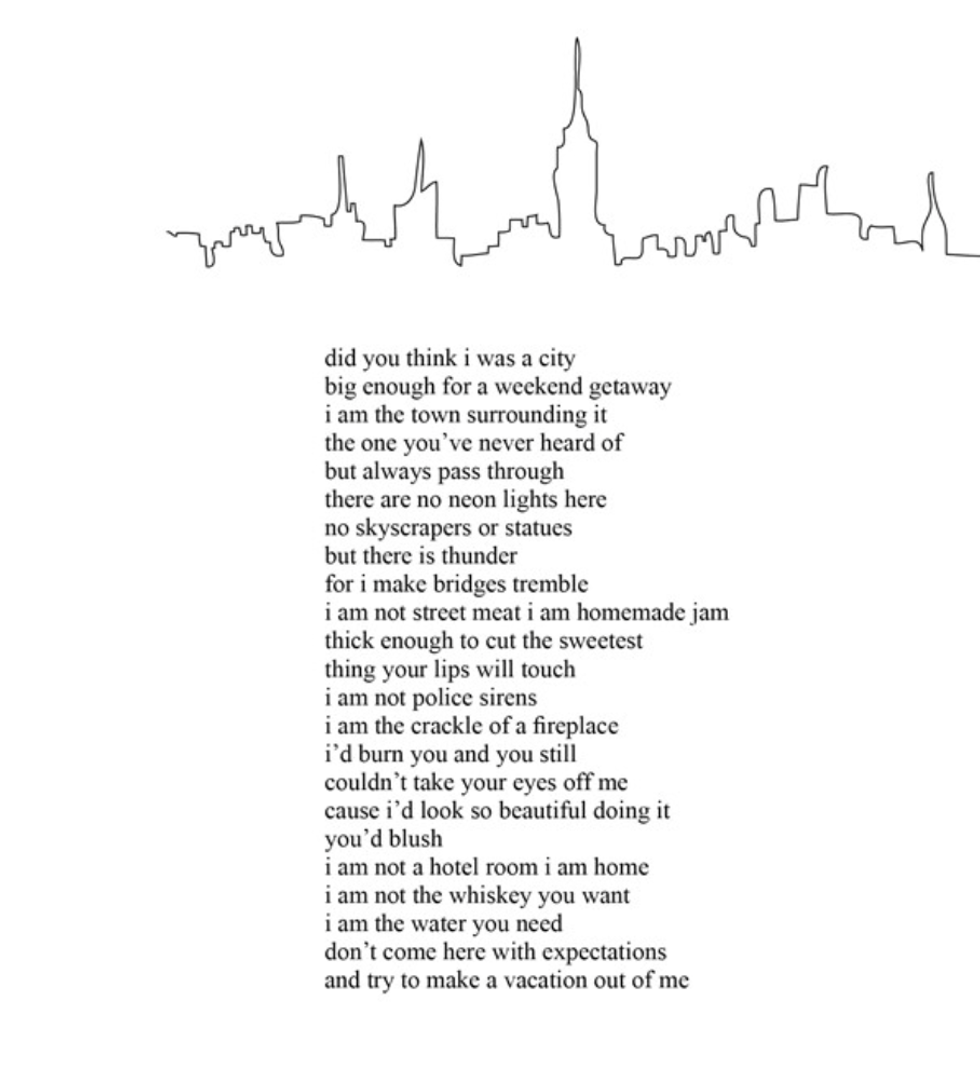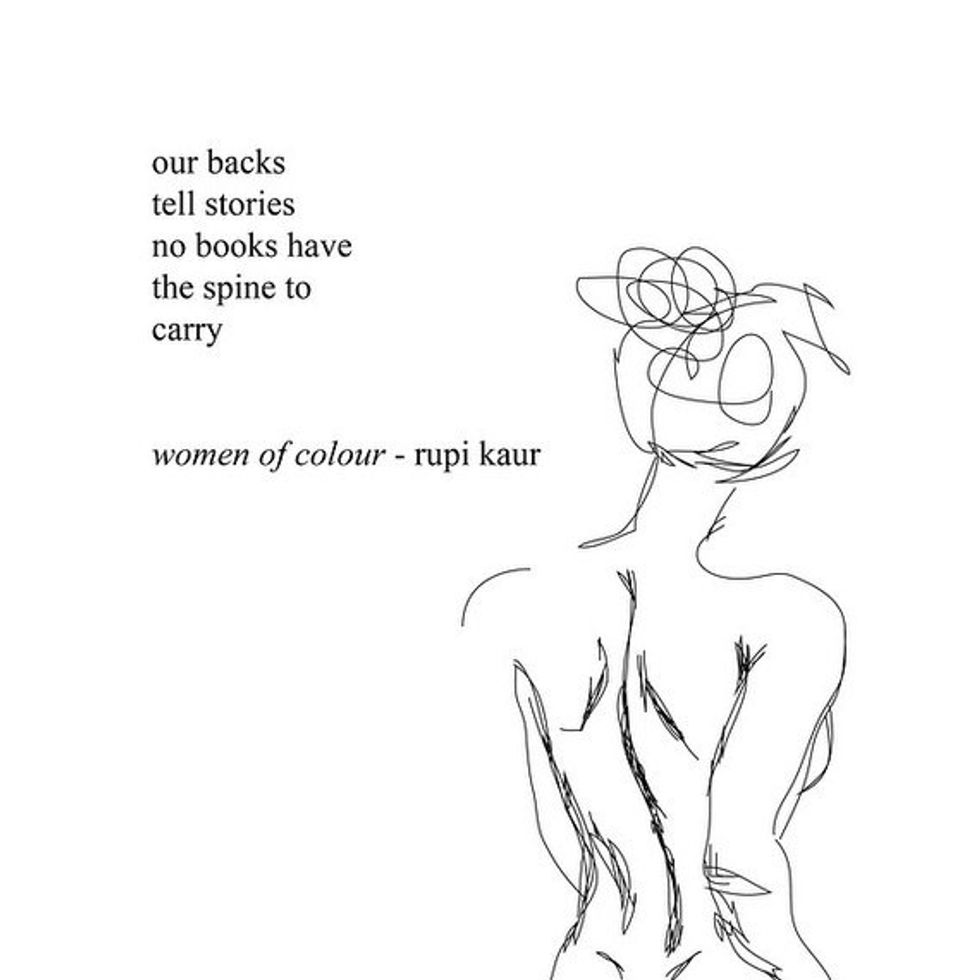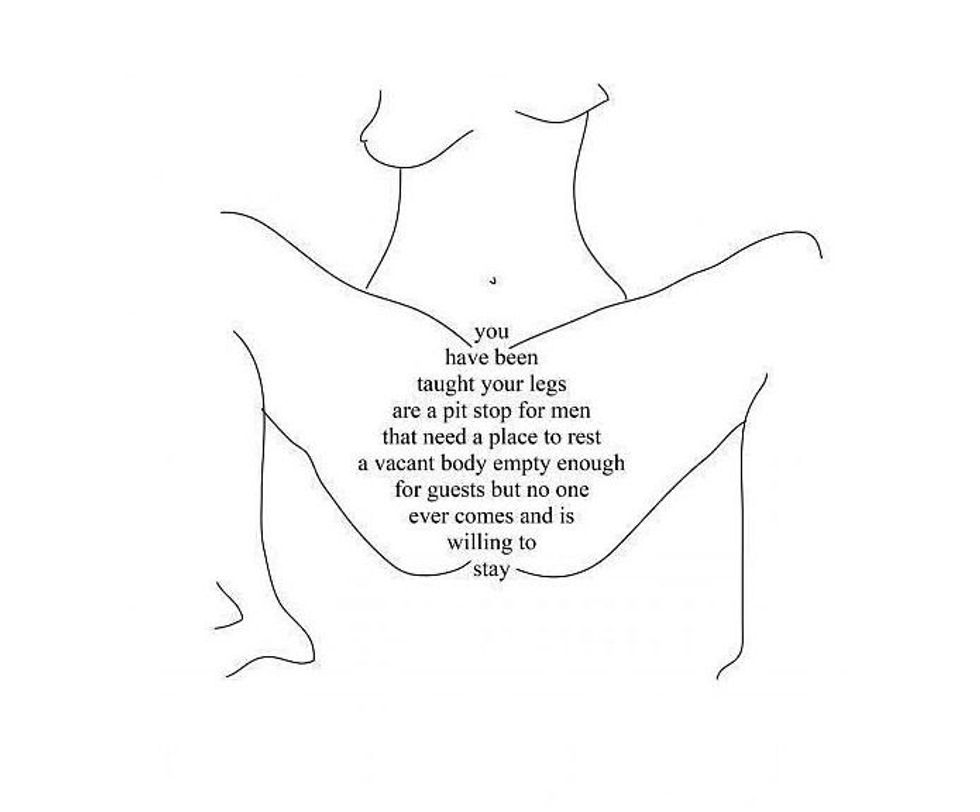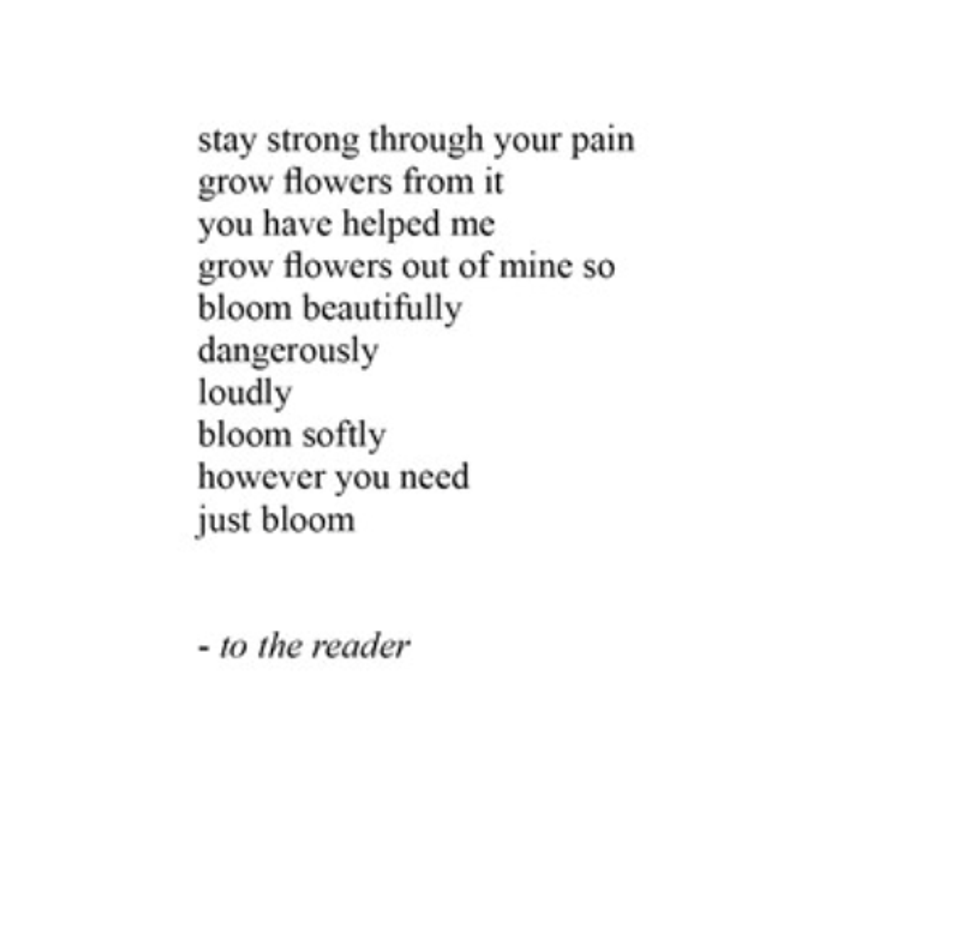my heart woke me crying last night
how can I help i begged
my heart said
write the book
This is the epigraph to “milk and honey,” a new, achingly beautiful book of poetry by Rupi Kaur. I recently read “milk and honey” and still cannot stop thinking about it — the poems have completely engulfed me and then left me out to dry. It is the kind of book that makes me wish I have not read it yet so I could go back to the beginning and experience it for the first time all over again. This is my attempt to show you what a magical book “milk and honey” is in the hopes I convince you to read it asap.
Kaur covers a range of heavy topics throughout the book: assault, abuse, love, loss, racism, and feminism. But “milk and honey” is ultimately a book about healing from traumas and overcoming our past and present demons. The book is divided into four sections: the hurting, the loving, the breaking and the healing. The titles speak for themselves; Kaur takes the reader through her dark times, her struggles to find self-love and her journey of healing and finding peace.

Like its title implies, “milk and honey” is thick yet sweet to read; it is smooth going down but congeals into deeper meaning, which is contrary to what the simplistic writing style first suggests. Kaur lays her soul bare, discussing sexual abuse, love, breakups and beauty all in the same minimalist yet powerful style. Her lyrical words pack a punch, and the minimalism only makes their meaning resonate more. The poems sometimes make you feel uncomfortable, aching, and hopeful all at once. And many are provocative, with the intention to make a statement, finding the perfect balance between personal and political.
Kaur’s style is also unique in that she uses no capitalization — everything in “milk and honey,” title included, is written in lowercase lettering. She also does not use any punctuation marks besides periods, which are used sparsely at that. This gives the poetry not only a distinct visual style, but also acts as a sort of equalizer of language. All the words are given the same structural emphasis, so their weight hits you solely based on their powerful meaning.
“milk and honey” is also unique in its illustrations. Throughout the book, Kaur has sprinkled simple, sometimes even childlike drawings that correspond to certain poems. But like the minimalist language, the simplicity of the illustrations do not detract from their poignancy. The drawings are angry, erotic, symbolic and blatantly provide an image to the searing words. Sometimes an illustration is vital to complete a poem.
Reading “milk and honey” can feel like you are examining Kaur’s painfully personal diary, yet the words have the ability to seep into you and resonate with your own story as well. In a way, the minimalist writing style and simple illustrations makes the poems less threatening and more accessible to a reader. Many of the poems are provocative, evoking difficult imagery. But they also beautifully speak to the reader, especially in “the healing” section.Reaching the end of “milk and honey” gives you the feeling right after a rainstorm — the clouds have passed, the air is fresh and new, and the sky looks hopeful. The rain, like the words, is cathartic.
Do yourself a favor: pick up a copy of “milk and honey,” devour it — and then read it again.





















